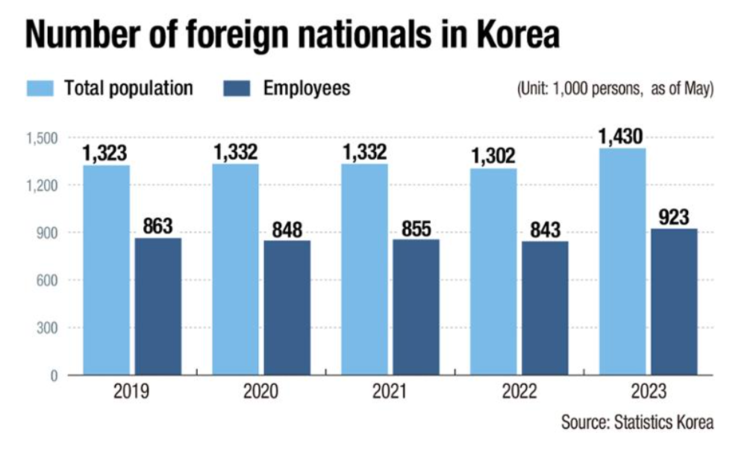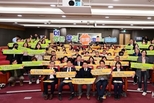Newsnomics AJAY ANGELINA reporter |
The number of foreign nationals residing in the Republic of Korea hit a record high of 1.43 million in May showed the data, released by Statistics Korea on Monday December 18, 2023.
According to the 2023 Immigrant Residence and Employment Survey results released by Statistics Korea, the number of foreign workers and residents from outside the country, aged 15 and above residing in South Korea for 91 days or more, hitting an all-time high in 2023, marked the highest since relevant data began to be compiled in 2017.

If this trend continues, the number is likely to surpass one million in early 2024.
The trend is in line with the stats agency’s forecast that one out of three people in the working-age population, or between 15 and 64, will be foreign nationals by 2072 if the demographic crisis remains unsolved in Asia’s fourth-largest economy.
“The year-on-year increase this year was attributable to the end of the pandemic that led to an influx of unskilled laborers from abroad as well as international students,” a senior Statistics Korea official said during a press briefing.
The official noted that the number of foreign residents increased from 1.23 million in 2017 to 1.32 million in 2019, but remained lower during the pandemic era during the next three years – 1.33 million in 2020 and 2021 and 1.3 million in 2022.

Among the total number of foreign populations, 813,000 or 56.8 percent were men and the remaining 617,000 or 43.2 percent were women.
As per country of origin, ethnic Koreans from China took up the largest share of the entire foreign population at 472,000 followed by Chinese at 135,000 and Vietnamese at 201,000.
Also, 923,000 foreigners who landed jobs in Korea this year marked a year-on-year increase of 80,000 or 9.5 percent.
By age, those who are in their 30s accounted for 33.3 percent of the entire foreign workforce, followed by those aged between 15 to 29 at 23.2 percent.
Those in their 40s took up 18.5 percent and those in their 50s accounted for 15.7 percent.
Some 44.6 percent of foreign workers had jobs in mining and manufacturing sectors, compared to 18.4 percent in wholesale and retail sales, accommodation and restaurant businesses combined, and another 15.5 percent in public services and small businesses.
Some 94.5 percent or 873,000 of the foreign employees were salaried workers, with more than half of them, notably 50.2% of foreign workers were found to be receiving monthly wages of 2 million won to 3 million won. Among non-professional employed foreigners, the primary reason cited for leaving their previous job was 'low wages,' accounting for 28.9%. This was followed by responses indicating that the work was either 'difficult or dangerous,' constituting 19.4% of the reasons provided.
At 35.8%, the second-largest proportion was represented by those earning more than 3 million won.
However, this category saw the most substantial increase compared to the previous year, with a significant rise of 9.2 percentage points.
The number of foreign students jumped 14.1 percent year-on-year to 188,000. Students from Vietnam accounted for 38.3 percent, followed by China at 27.7 percent and Uzbekistan at 6.4 percent.










